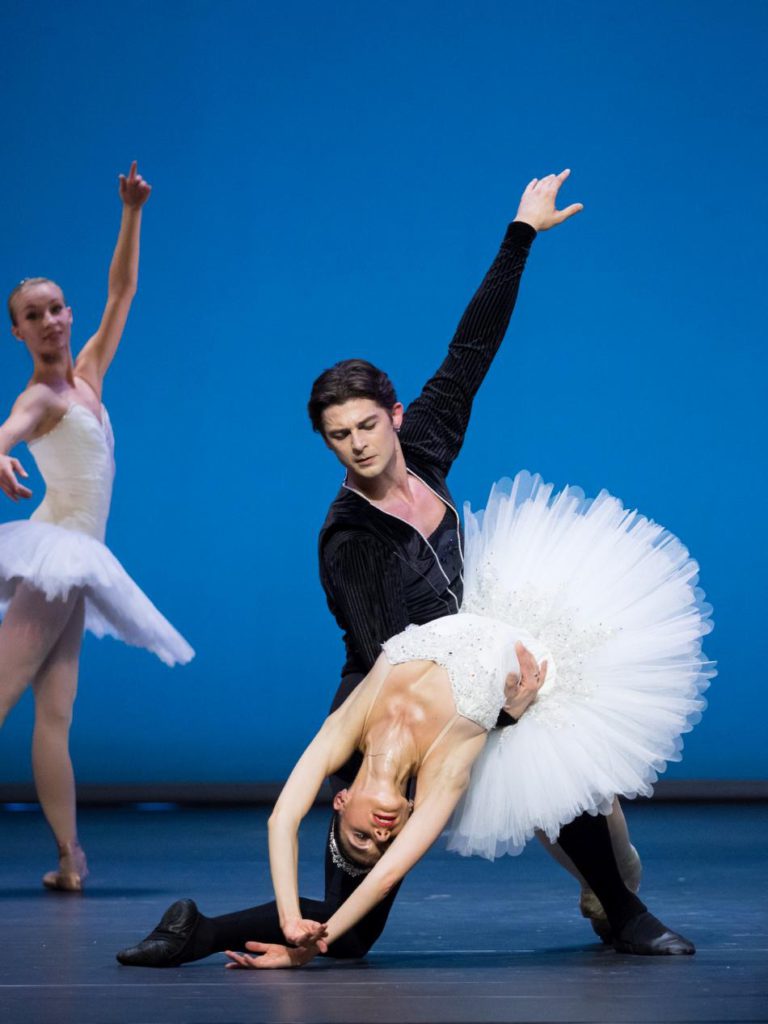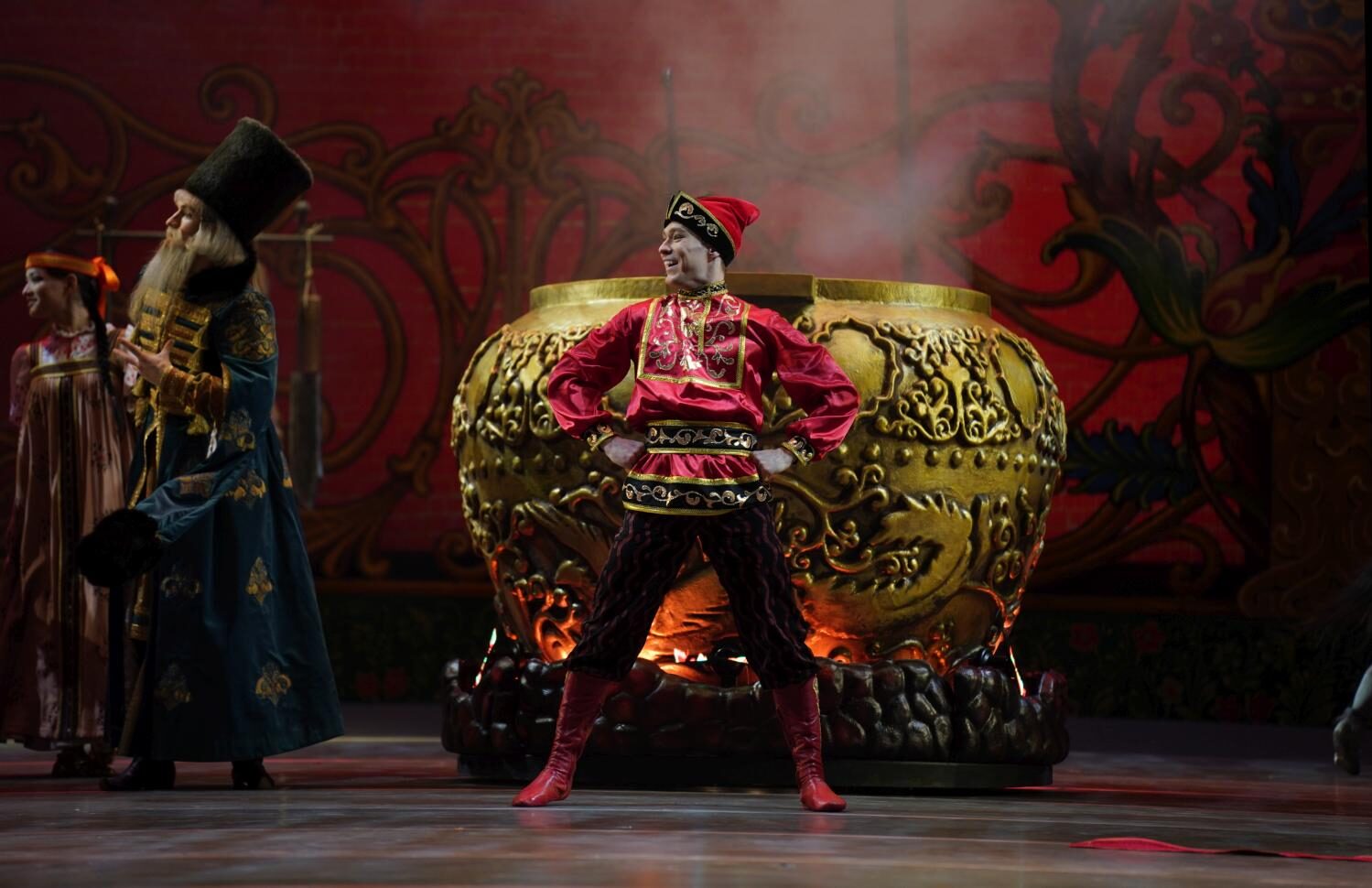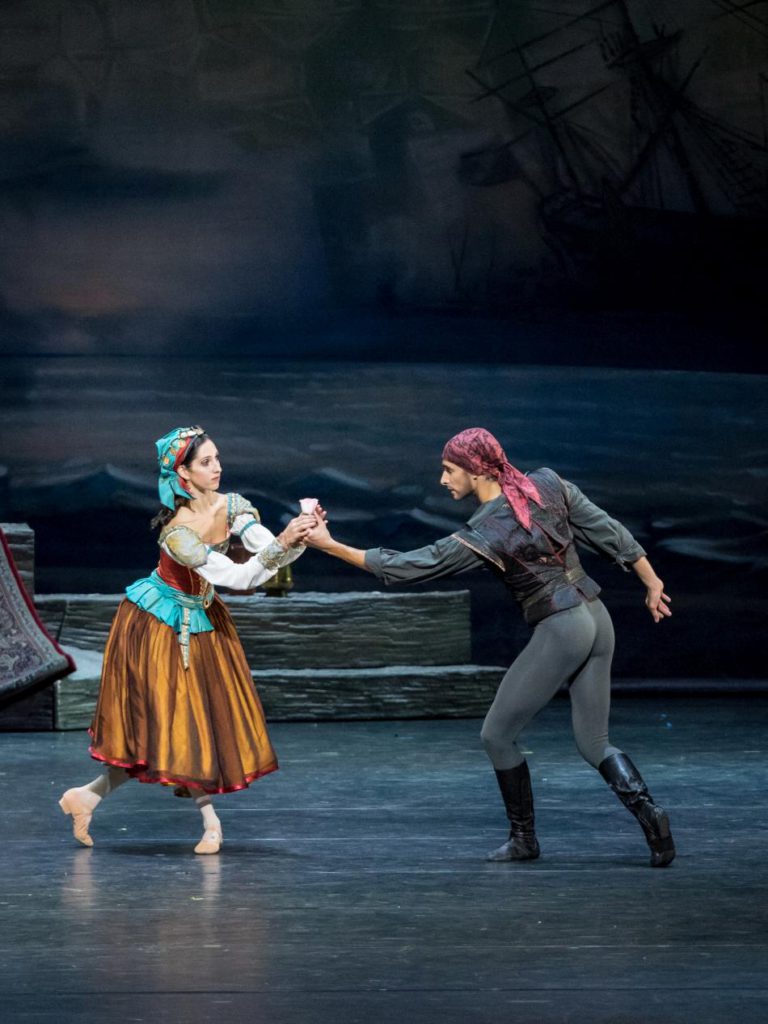Premiering Next to a Genius
“Balanchine / Liang / Proietto”
Vienna State Ballet
Vienna State Opera
Vienna, Austria
November 01, 2016
by Ilona Landgraf
Copyright © 2016 by Ilona Landgraf
 Vienna State Ballet’s new mixed bill traces an arc from a piece capturing Balanchine’s pure classicism to a new, multi-art form work honoring the tradition of romantic ballets. The fascination of flying and the idea of weightlessness unites the three pieces. Edwaard Liang’s “Murmuration”, 2013 choreography for Houston Ballet, deals with the flight formation of flocks of birds. For “Blanc”, the evening’s world premiere, Argentinian choreographer Daniel Proietto took inspiration from Michael Fokine’s flying sylphs. The opener, George Balanchine’s “Symphony in C”, doesn’t involve aviation but leaves one in the most elevated of moods when it is danced well. And so it was. The company was in sunniest form on opening night.
Vienna State Ballet’s new mixed bill traces an arc from a piece capturing Balanchine’s pure classicism to a new, multi-art form work honoring the tradition of romantic ballets. The fascination of flying and the idea of weightlessness unites the three pieces. Edwaard Liang’s “Murmuration”, 2013 choreography for Houston Ballet, deals with the flight formation of flocks of birds. For “Blanc”, the evening’s world premiere, Argentinian choreographer Daniel Proietto took inspiration from Michael Fokine’s flying sylphs. The opener, George Balanchine’s “Symphony in C”, doesn’t involve aviation but leaves one in the most elevated of moods when it is danced well. And so it was. The company was in sunniest form on opening night.
Natascha Mair and Jakob Feyferlik led the first movement of “Symphony in C.” Both were precise, swift and conveyed an infectious good mood. Í liked Liudmila Konovalova and Vladimir Shishov, the second movement’s main couple. Konovalova, blessed with a refined technique, subtly nuanced between composed grief and almost playful cheerfulness. Her tender fragility was met by Shishov’s caring look and fine partnering. (more…)

